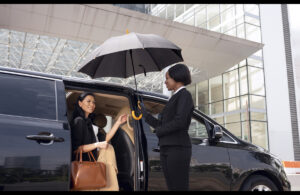A Detailed Ins and Outs About How to Tow a Car?
Towing a car may seem straightforward, but proper knowledge and equipment are required to ensure safety and prevent damage. Whether you need to tow a broken-down vehicle, move a car to a new location, or assist someone in distress, understanding the right towing techniques is essential. Let’s study the query How to Tow a Car?
Methods of Towing a Car
Using a Tow Dolly
A tow dolly is a small trailer with two wheels that lifts the car’s front wheels off the ground while the rear wheels remain on the road. This method is ideal for front-wheel-drive vehicles.
- Pros: Cost-effective, easy to use, lightweight
- Cons: Not suitable for all-wheel-drive vehicles, potential for wear on rear tires
Using a Tow Bar
A tow bar attaches the towing vehicle directly to the towed car, allowing all four wheels to remain on the ground. This method is commonly used for flat towing behind RVs.
- Pros: Simple setup, compact storage, no need for a trailer
- Cons: Requires modifications to the towed vehicle, not suitable for all cars
Using a Car Trailer
A car trailer or flatbed trailer completely lifts the towed vehicle off the ground. This method is the safest and most reliable, but it requires a towing vehicle with sufficient capacity.
- Pros: Protects the car from road wear, suitable for all vehicle types
- Cons: Expensive, requires more space and a strong tow vehicle
Using a Rope or Chain
A rope or chain tow is an emergency method used for short distances. One vehicle pulls the other using a strong rope or chain, keeping both vehicles aligned.
- Pros: Quick and easy for emergencies
- Cons: Dangerous if not done properly, illegal in some areas, risk of damage
Step-by-Step Guide to Towing a Car
Step 1: Check Legal Requirements
Before towing a car, check local regulations. Some areas have restrictions on the types of towing allowed and may require safety features such as warning lights or tow bars.
Step 2: Choose the Right Towing Method
Select the towing method based on the type of vehicle and the distance to be covered. Just make sure that the towing vehicle has a suitable towing capacity.
Step 3: Attach the Vehicle Securely
- If using a tow dolly or trailer, properly secure the car with straps and wheel chocks.
- If flat towing, ensure the tow bar is securely connected to both vehicles.
- If using a rope or chain, maintain a safe length and ensure it is securely fastened.
Step 4: Check Lights and Signals
Ensure the towed vehicle’s brake lights and turn signals are operational. If the car’s electrical system is non-functional, use external tow lights.
Step 5: Drive Carefully
- Maintain a slow and steady speed, especially when braking or turning.
- Keep a greater distance from other vehicles to allow for safe stopping.
Common Complications When Towing a Car
Transmission Damage
Towing an automatic transmission vehicle with its drive wheels on the ground can cause severe transmission damage. Use a tow dolly or trailer for automatic cars.
Overheating
If a towed vehicle’s wheels move, its transmission can overheat due to insufficient lubrication. Always follow manufacturer guidelines.
Braking Issues
A towed vehicle does not have active braking, making stopping more challenging. Brake controllers or auxiliary braking systems can help.
Poor Visibility
The towed vehicle may obstruct the driver’s rear view. Use extended mirrors to improve visibility.
Connection Failure
Improperly secured tow bars, chains, or straps can detach, leading to serious accidents. Double-check all connections before towing.
Steering Instability
In some cases, the towed vehicle’s steering may not lock in place, causing swaying or loss of control. Ensure proper alignment and stability.
Legal Restrictions
Certain areas may prohibit specific towing methods or require special permits. Always verify towing laws before starting the journey.

Tips for Safe Towing
Use Proper Equipment:
Invest in high-quality tow bars, straps, and safety chains.
Plan Your Route:
Avoid steep inclines, rough roads, and areas with heavy traffic.
Communicate with the Driver:
If towing with another driver, establish clear signals for stopping and turning.
Check Tires and Brakes:
Ensure both vehicles have properly inflated tires and functional brakes.
Perform Regular Checks:
Stop periodically to inspect connections, lights, and tire conditions.
Conclusion:
Towing a car requires careful planning, the right equipment, and a strong understanding of potential complications. By following safe towing procedures, being aware of possible issues, and hiring an expert company like AM & Sons Recovery, you can ensure a smooth and secure towing experience. Always prioritise safety to prevent accidents and vehicle damage, whether using a tow dolly, tow bar, or trailer. If in doubt, consider seeking professional towing assistance to avoid risks and ensure a hassle-free process.














Post Comment